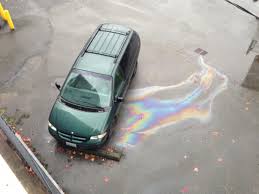
Contact:
Jeff Odefey, American Rivers, 415.589.0642,
Becky Hammer, Natural Resources Defense Council, 202.513.6254, Bruce Reznik, Los Angeles Waterkeeper, (619) 851-9997, Sean Bothwell, California Coastkeeper Alliance 949-291-3401, sbothwell@alanawebre
LOS ANGELES – In response to petitions filed by American Rivers, NRDC (Natural Resources Defense Council), and Los Angeles Waterkeeper (Petitioners), the U.S. Environmental Protection Agency (EPA) and the Los Angeles Regional Water Quality Control Board (Regional Board) have proposed the nation’s first requirement for certain commercial, industrial, and institutional (CII) sites to reduce polluted stormwater discharges in two Los Angeles County watersheds that are heavily polluted by zinc and copper. The agencies are accepting public comments on the new CII permit through September 9.
Polluted stormwater running off the parking lots and rooftops of CII properties, such as big box stores and large distribution centers, is largely unregulated, forcing local governments to bear the responsibility of cleaning up impacted waters. In many cases, municipal efforts have been insufficient to restore these waterways to a healthy condition. Recognizing the need for action, in 2015 the Petitioners requested that EPA direct CII sites to obtain Clean Water Act permits that would reduce the amount of pollution that they dump into the Alamitos Bay/Los Cerritos Channel Watershed and the Dominguez Channel and Los Angeles/Long Beach Inner Harbor Watershed. In connection with the petition, the groups submitted detailed evidence establishing that privately owned CII sites were contributing to widespread violations of water quality standards in the two watersheds at issue. As a result of these repeated violations, the waterways are unsafe for human use and create risks of health impacts from fish consumption or recreation, in addition to harming local wildlife.
After EPA declined to take action, the Petitioners successfully went to court and obtained a precedential order requiring stormwater from CII sites in these watersheds to be regulated. The steps taken this month by EPA Region 9 and the Regional Board to implement that court order demonstrate meaningful leadership to achieve healthier waterways for Angelenos.
The CII permit marks a new generation in stormwater permitting, building on lessons learned over the past decades of stormwater regulation. The CII permit applies to privately-owned CII sites with at least 5 acres of impervious surfaces, which account for 32% of the stormwater pollution that enters the two watersheds at issue. The CII permit provides three clear and concise paths to compliance, allowing every permittee to understand their legal obligation to reduce contamination. It addresses a currently unregulated source of stormwater pollution, ensuring property owners do their fair share to control pollution generated from their property and lessening costs and regulatory burdens for local governments. The new CII permit also encourages collaboration between CII owners to build green infrastructure projects that will improve water quality, contribute to a sustainable source of water supply and build more resilient communities. Finally, the CII permit is forward-thinking because it creates a funding mechanism for local governments to build planned but unfunded stormwater pollution control projects.
While the CII permit is a significant step towards achieving water quality standards in Los Angeles, it is only a first step. The state needs to do more to regulate all privately-owned CII facilities across California that discharge significant amounts of stormwater pollutants into our waters. By expanding the CII permit and reducing water pollution statewide, EPA and the State of California can make good on their obligations to ensure that all Californians have fishable, swimmable waters.
“This moment has been long in coming, and we’re excited that our collaboration with EPA and the Water Boards has led to real progress toward healthier urban waters in California,” says Jeff Odefey, of American Rivers’ Clean Water Supply Program. “Hopefully this permit will be a model for action across California and the rest of the nation.”
“The conventional approach to cleaning up stormwater – placing the burden on local governments – isn’t fair, and it isn’t working,” says Becky Hammer, Deputy Director of Federal Water Policy for NRDC. “It’s time to try something new. Private properties that contribute to water quality problems need to play a role in the shared effort of restoring our waterways to full health. This draft permit embodies the kind of cutting-edge, collaborative strategy we need, and we’re excited to see it adopted and implemented.”
“We are pleased to see the release of this innovative permit that finally addresses a key source of polluted urban runoff throughout Los Angeles, and simultaneously creates opportunities to enhance local water supplies,” says Bruce Reznik, Executive Director for Los Angeles Waterkeeper. “We look forward to working with the Regional Board and the State Water Board to ensure this permit, and any forthcoming statewide commercial permit, helps achieve clean waterways in our region and elsewhere as soon as possible.”
“We applaud the Water Boards’ initiative to modernize stormwater permitting in California while also encouraging green infrastructure in highly urban communities,” says Sean Bothwell, Executive Director for California Coastkeeper Alliance. “The Los Angeles CII permit should be a model for the rest of the state, and we are hopeful that current legislation (AB 2106 – R. Rivas) will result in the adoption of a statewide CII permit.”
The Preliminary Residual Designation released by EPA can be found here.
The Draft CII Stormwater Permit released by the Regional Board can be found here.
###

Executive Director Sean Bothwell leads CCKA’s initiatives to fight for swimmable, fishable, and drinkable waters for all Californians.



